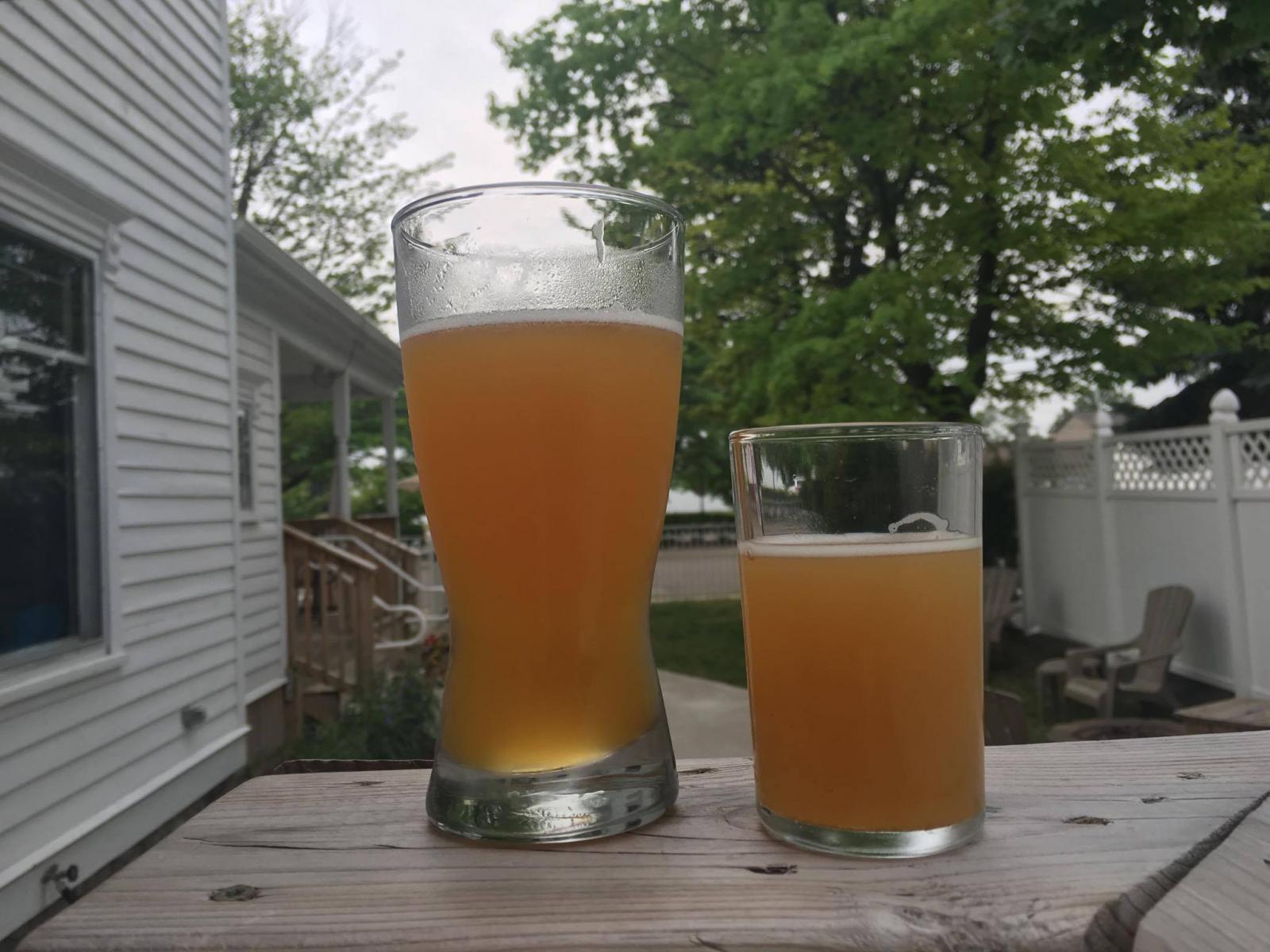I'm planning to brew an East Coast Syle IPA next week and was hoping to get some pointers before I fully commit (i.e. mash in).
Take a gander at the recipe below - my goal is a handsomely cloudy (NOT murky) IPA that has that fruit explosion that you get from the East Coast type IPA. My main questions:
- How do the hop additions look? I have limited experience with whirlpool so I'm not quite sure how much to add...
- I am going to use store bought RO water - what additions should I add? What should my mineral targets be for this type of ale?
- The Gigayeast GY054 Vermont Ale - anyone have any experience with it? Is it slow? Explosive? What is the ideal temperature to coax a few fruity esters out of that sucker?
Any assistance would be MUCH appreciated!
BeerSmith 2 Recipe Printout - http://www.beersmith.com
Recipe: ECIPA001
Brewer: RLonardo
Asst Brewer:
Style: American IPA
TYPE: All Grain
Taste: (30.0)
Recipe Specifications
--------------------------
Boil Size: 7.04 gal
Post Boil Volume: 6.24 gal
Batch Size (fermenter): 5.75 gal
Bottling Volume: 5.00 gal
Estimated OG: 1.062 SG
Estimated Color: 5.6 SRM
Estimated IBU: 142.5 IBUs
Brewhouse Efficiency: 75.00 %
Est Mash Efficiency: 78.3 %
Boil Time: 60 Minutes
Ingredients:
------------
Amt Name Type # %/IBU
11 lbs Vienna Malt (3.5 SRM) Grain 1 83.8 %
1 lbs 8.0 oz Oats, Flaked (Briess) (1.4 SRM) Grain 2 11.4 %
10.0 oz Carapils (Briess) (1.5 SRM) Grain 3 4.8 %
0.75 oz Columbus/Tomahawk/Zeus (CTZ) [15.00 %] - Hop 4 34.6 IBUs
2.50 oz Calypso [14.90 %] - Steep/Whirlpool 25. Hop 5 39.9 IBUs
2.50 oz Mosaic (HBC 369) [11.90 %] - Steep/Whirl Hop 6 31.8 IBUs
2.25 oz Columbus/Tomahawk/Zeus (CTZ) [15.00 %] - Hop 7 36.1 IBUs
1.0 pkg Vermont Ale (Gigayeast #) Yeast 8 -
1.50 oz Calypso [14.90 %] - Dry Hop 5.0 Days Hop 9 0.0 IBUs
1.50 oz Mosaic (HBC 369) [12.40 %] - Dry Hop 5.0 Hop 10 0.0 IBUs
1.00 oz Columbus/Tomahawk/Zeus (CTZ) [15.00 %] - Hop 11 0.0 IBUs
Mash Schedule: Single Infusion, Medium Body, Batch Sparge
Total Grain Weight: 13 lbs 2.0 oz
----------------------------
Name Description Step Temperat Step Time
Mash In Add 16.81 qt of water at 165.7 F 154.0 F 60 min
Sparge: Batch sparge with 2 steps (0.94gal, 3.57gal) of 168.0 F water
Take a gander at the recipe below - my goal is a handsomely cloudy (NOT murky) IPA that has that fruit explosion that you get from the East Coast type IPA. My main questions:
- How do the hop additions look? I have limited experience with whirlpool so I'm not quite sure how much to add...
- I am going to use store bought RO water - what additions should I add? What should my mineral targets be for this type of ale?
- The Gigayeast GY054 Vermont Ale - anyone have any experience with it? Is it slow? Explosive? What is the ideal temperature to coax a few fruity esters out of that sucker?
Any assistance would be MUCH appreciated!
BeerSmith 2 Recipe Printout - http://www.beersmith.com
Recipe: ECIPA001
Brewer: RLonardo
Asst Brewer:
Style: American IPA
TYPE: All Grain
Taste: (30.0)
Recipe Specifications
--------------------------
Boil Size: 7.04 gal
Post Boil Volume: 6.24 gal
Batch Size (fermenter): 5.75 gal
Bottling Volume: 5.00 gal
Estimated OG: 1.062 SG
Estimated Color: 5.6 SRM
Estimated IBU: 142.5 IBUs
Brewhouse Efficiency: 75.00 %
Est Mash Efficiency: 78.3 %
Boil Time: 60 Minutes
Ingredients:
------------
Amt Name Type # %/IBU
11 lbs Vienna Malt (3.5 SRM) Grain 1 83.8 %
1 lbs 8.0 oz Oats, Flaked (Briess) (1.4 SRM) Grain 2 11.4 %
10.0 oz Carapils (Briess) (1.5 SRM) Grain 3 4.8 %
0.75 oz Columbus/Tomahawk/Zeus (CTZ) [15.00 %] - Hop 4 34.6 IBUs
2.50 oz Calypso [14.90 %] - Steep/Whirlpool 25. Hop 5 39.9 IBUs
2.50 oz Mosaic (HBC 369) [11.90 %] - Steep/Whirl Hop 6 31.8 IBUs
2.25 oz Columbus/Tomahawk/Zeus (CTZ) [15.00 %] - Hop 7 36.1 IBUs
1.0 pkg Vermont Ale (Gigayeast #) Yeast 8 -
1.50 oz Calypso [14.90 %] - Dry Hop 5.0 Days Hop 9 0.0 IBUs
1.50 oz Mosaic (HBC 369) [12.40 %] - Dry Hop 5.0 Hop 10 0.0 IBUs
1.00 oz Columbus/Tomahawk/Zeus (CTZ) [15.00 %] - Hop 11 0.0 IBUs
Mash Schedule: Single Infusion, Medium Body, Batch Sparge
Total Grain Weight: 13 lbs 2.0 oz
----------------------------
Name Description Step Temperat Step Time
Mash In Add 16.81 qt of water at 165.7 F 154.0 F 60 min
Sparge: Batch sparge with 2 steps (0.94gal, 3.57gal) of 168.0 F water





